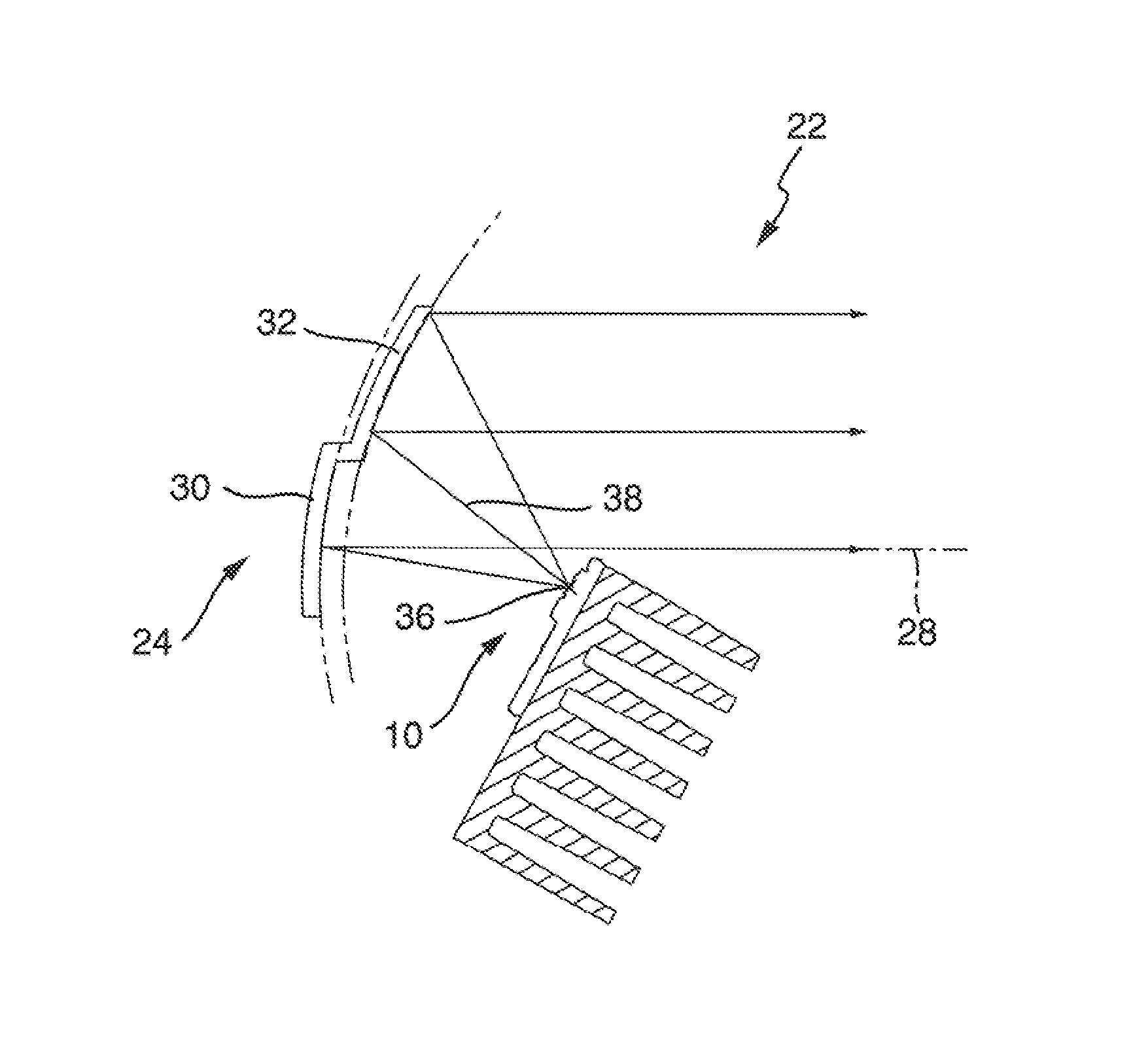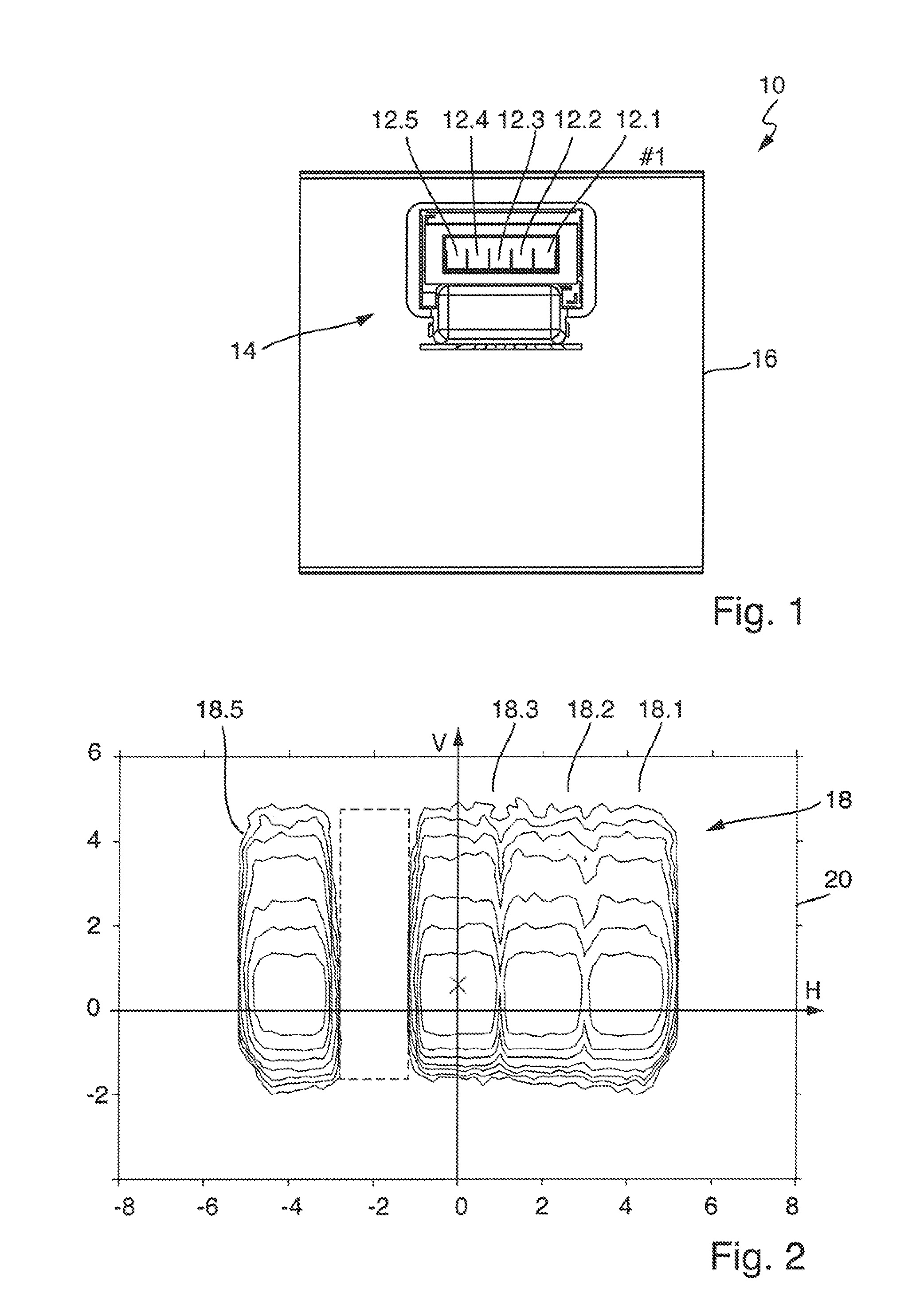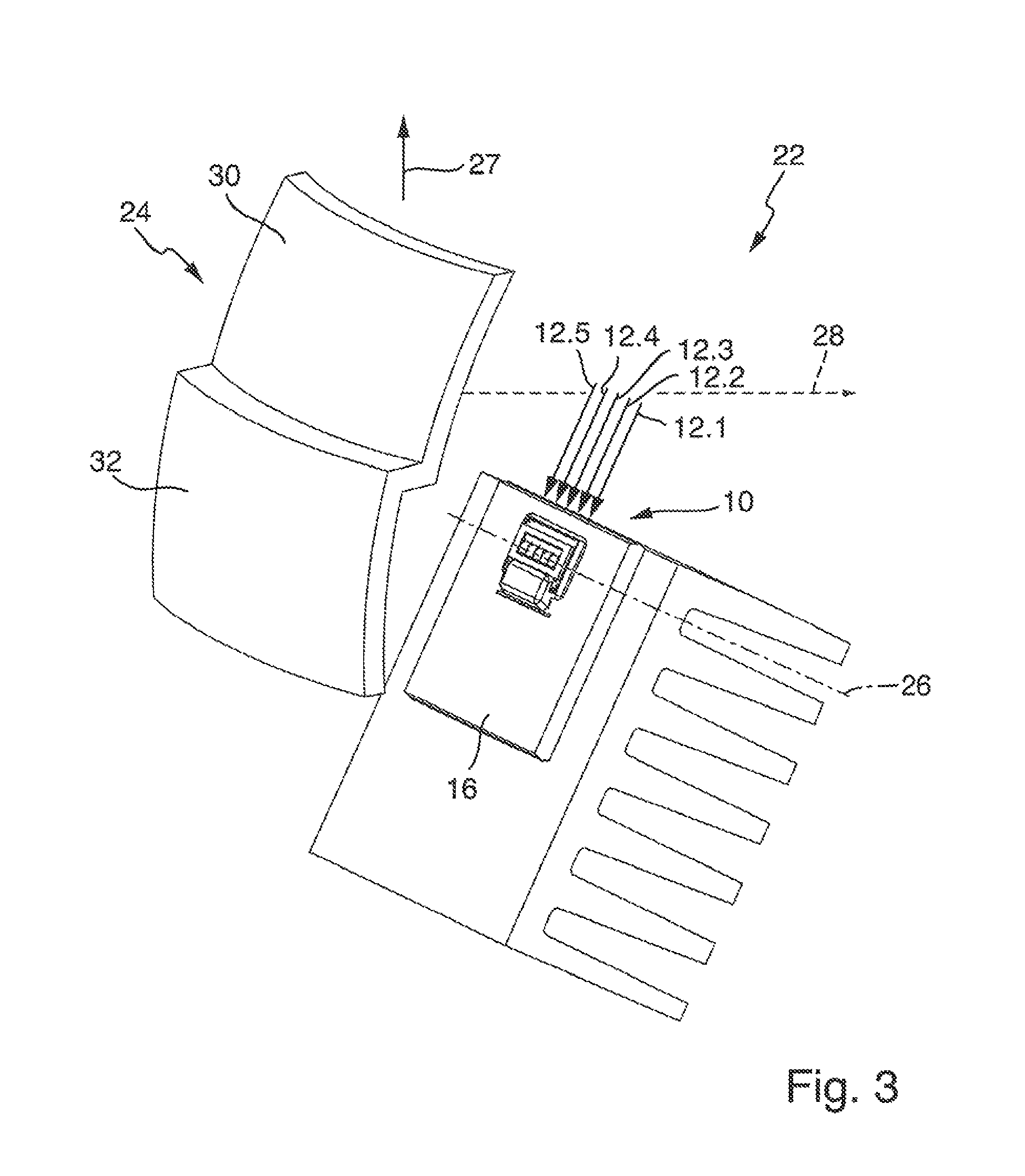Lamp module for a glare-free motor vehicle high beam
a technology for motor vehicles and headlamps, applied in fixed installations, lighting and heating devices, lighting support devices, etc., can solve the problems of unfavorable conditions for the generation of good intermediate images, undesired color fringes of light-retracting secondary lenses, etc., to reduce blinding or brighten, eliminate chromatic aberrations of refracting lenses, and easy and cost-effective
- Summary
- Abstract
- Description
- Claims
- Application Information
AI Technical Summary
Benefits of technology
Problems solved by technology
Method used
Image
Examples
Embodiment Construction
[0035]Identical reference symbols in different figures indicate the same components or at least components having the same functions.
[0036]FIG. 1 shows a top view of a light source 10 having “n=5” light-emitting surfaces 12.1-12.5. It is understood that “N” can be any natural number greater than or equal to 1.
[0037]In an embodiment, each light-emitting surface belongs to one LED chip (LED=light-emitting diode). The LED chips are installed on a common interconnect device 14. The supply of electric energy and the control are obtained via the interconnect device.
[0038]The LEDs can be individually controlled as single units and / or in groups such that the luminous flux emitted from each light-emitting surface can be controlled individually. The controllability includes, thereby, in an embodiment, not only a switching between permanently “on” and permanently “off,” but also a control of the brightness, which, for example, can take place by an activation with a duty cycle having a signal f...
PUM
 Login to View More
Login to View More Abstract
Description
Claims
Application Information
 Login to View More
Login to View More - R&D
- Intellectual Property
- Life Sciences
- Materials
- Tech Scout
- Unparalleled Data Quality
- Higher Quality Content
- 60% Fewer Hallucinations
Browse by: Latest US Patents, China's latest patents, Technical Efficacy Thesaurus, Application Domain, Technology Topic, Popular Technical Reports.
© 2025 PatSnap. All rights reserved.Legal|Privacy policy|Modern Slavery Act Transparency Statement|Sitemap|About US| Contact US: help@patsnap.com



